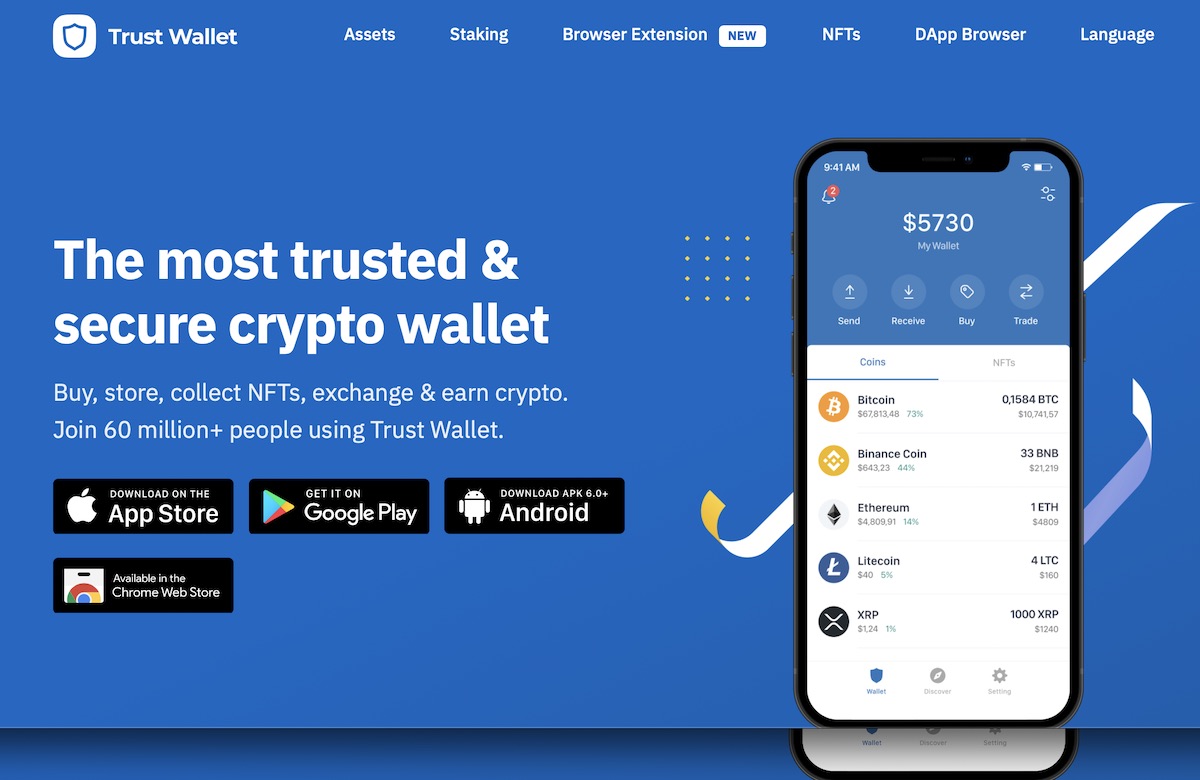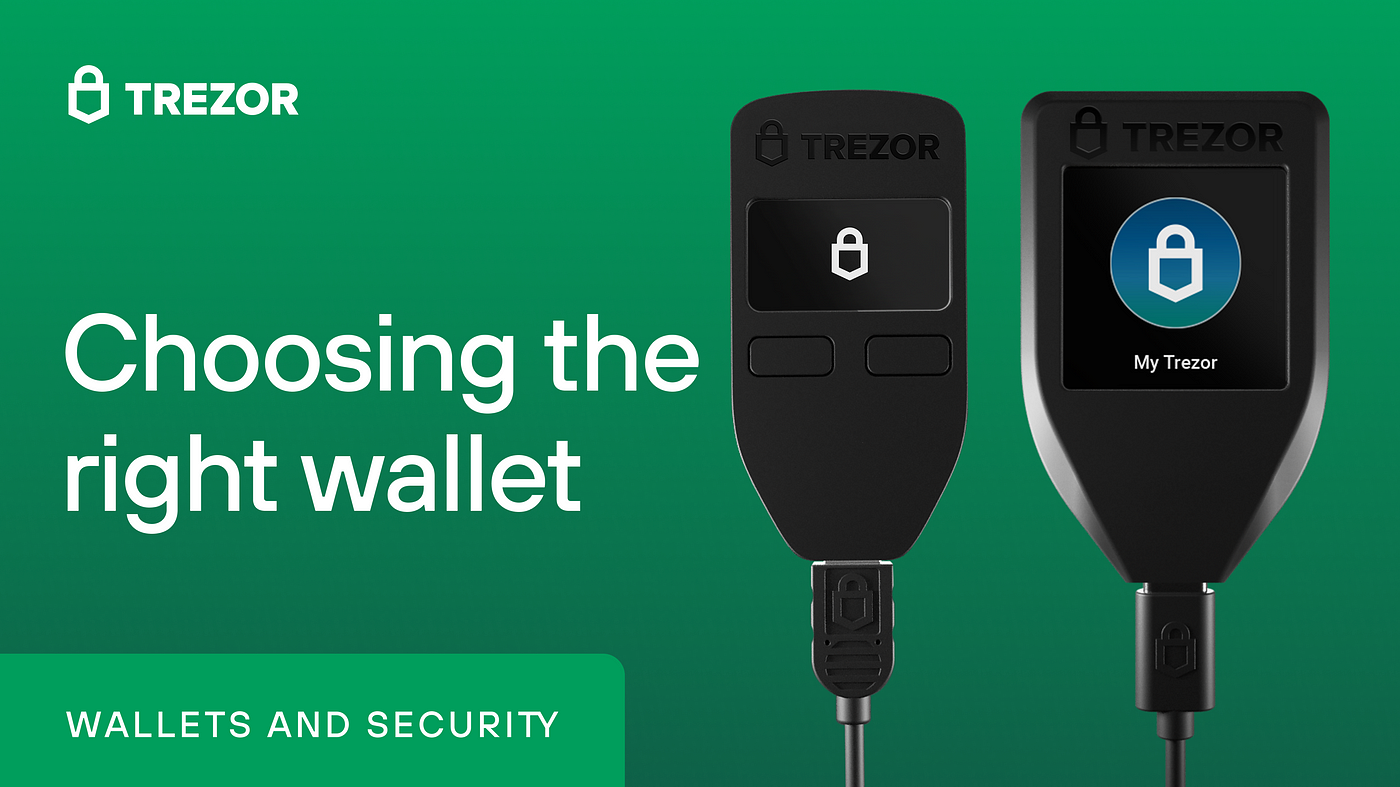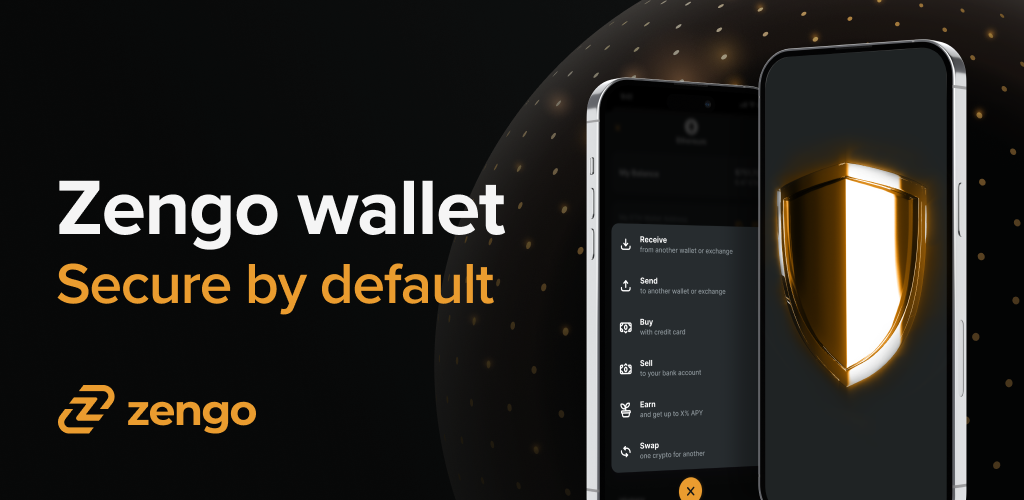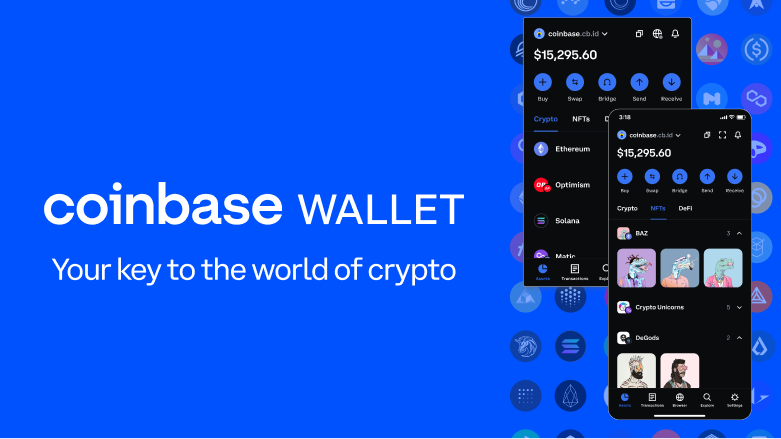Recommended
5 Best Tether (USDT) Wallets in 2024
Selecting the ideal wallet to hold your USDT can be difficult. For this reason, we’ve put up a thorough guide on the things to think about and the top USDT wallets to keep an eye on.
As a stablecoin, Tether (USDT) aims to mirror the US dollar’s value, unlike Bitcoin, Ethereum, or other cryptocurrencies. Because of its 1:1 parity with the US dollar, it is an extremely stable cryptocurrency.
Its main benefit is that, due to its stability, it is far less volatile than other cryptocurrencies. For many of us, this makes Tether (USDT) an excellent investment choice. The five top Tether wallets for 2024 are contrasted in this guide.
What is a Tether Wallet?
Investors can save their USDT tokens in a Tether wallet. Depending on their needs, investors have the option of using a hardware wallet or a software wallet. Tether wallets also facilitate the blockchain-based transfer of USDT tokens for investors.
Finding the right wallet is the next step for Tether investors. The USDT coins are protected and users can interact with the blockchain because of this. There is a wide range in the security and ease of use provided by Tether wallets.
The ability to send and receive tokens is a feature of most Tether wallets, for instance. Since Tether is an ERC20 token, this process runs on the Ethereum network. Still, you may trade cryptocurrencies with the top Tether wallets. Because of this, investors can convert USDT to fiat currency or another cryptocurrency.
Several Tether wallets are also compatible with decentralized applications built for Web 3.0. Investors can now make passive income with their USDT coins. Investors can generate yields regardless of market volatility because USDT is pegged to the US currency.
A custodial or non-custodial Tether wallet will be available to investors. Safeguarding the user’s private keys, custodial wallets often provide cold storage and two-factor authentication, among other security features. When investors use a non-custodial wallet, they are personally liable for the security of their USDT tokens because they have complete control over their private keys.
Think about the kind of Tether wallet you’re using as well. For instance, some software wallet providers provide a desktop client, a mobile app, and even an extension for your browser. In contrast, hardware wallets are tangible pieces of hardware. We go into greater depth later on in this guide regarding the benefits and drawbacks of each form of Tether wallet.
| Download App for Android | Download App for iOS |
What is Tether?
Among cryptocurrencies, Tether (USDT) stands out due to its unusual peg to a traditional fiat currency, usually the US dollar. Stability and absence of price volatility, as seen in other cryptocurrencies such as Bitcoin or Ethereum, are intended outcomes of this pegging.
To protect one’s cryptocurrency holdings from other cryptocurrencies’ price fluctuations or to enter and exit crypto positions rapidly without converting to fiat money is the principal and most significant use case for USDT. For instance, when market volatility is at an all-time high, crypto investors often shift some of their holdings into stablecoins, reducing their exposure to more traditional crypto assets.
Anyone having a blockchain address can be paid through a cryptocurrency network, including vendors, institutions, and individuals. Stablecoin transfers are available at all times and have less transaction fees compared to bank transfers.
Crypto exchanges offer USDT as a trading pair, so users may see how an asset is doing in USD or look for arbitrage opportunities.
Best Tether (USDT) Wallets
Can’t seem to decide which Tether wallet is ideal for you? We go over the top 5 Tether wallets for 2024 down below.
We cover mobile, desktop, and hardware device providers, as well as a range of custodial and non-custodial ones. This guarantees that a Tether wallet type to meet any need exists.
| Download App for Android | Download App for iOS |
1.Ledger – A Well-Known and Simple Crypto Wallet That Supports More Than 5500 Tokens
Among hardware wallets, the Ledger Nano X and Nano S versions are household names, and for good reason: they can store more than 5,500 different coins and tokens.

Suitable for consumers with different portfolios, this covers major cryptocurrencies like Ripple, Bitcoin, and Ethereum in addition to NFTs.
One notable aspect of the Nano X is its Bluetooth capabilities, which lets customers easily control their cryptocurrency from their smartphone.
When used in conjunction with the Ledger Live app, this facilitates the purchase, sale, and staking of cryptocurrencies, enhancing the user experience. It also comes with a 100 mAh battery, so you can use it for a long time.
Despite not having Bluetooth, the Nano S offers robust security and the ability to manage assets using the Ledger Live software, which is available on both Android and desktop.
The Nano S and other Ledger wallets have limited storage capacity, which can necessitate regular app administration.
Those who prefer open-source, community-audited software are concerned that the OS isn’t open-source. But this closed-source method is a part of Ledger’s plan to keep infected devices isolated and secure.
In addition, Ledger’s customer assistance and educational offerings, such as the Ledger Academy, are second to none. From the most fundamental blockchain concepts to more complex ones, this resource covers it all, making it ideal for newcomers.
Pros
- Supports more than 5,500 coins and tokens.
- The Nano X includes Bluetooth connectivity.
- Strong security measures.
- The Ledger Live app is for asset management.
Cons
- Restricted storage, particularly on the Nano S.
2.Trust Wallet – One of the Best USDT Mobile Wallets
Among the several USDT mobile wallets available, Trust Wallet stands out. You can use it with more than 70 different blockchain networks and millions of digital assets.

The top cryptocurrency exchange in the world, Binance, owns the Trust Wallet app, which lets users purchase, sell, and swap cryptocurrencies, as well as collect and trade Non-Fungible Tokens (NFTs). The app also lets users explore dApps on Ethereum and the BNB ecosystem.
Trust Wallet improved the Web3 experience with its browser plugin on November 14, 2022. It supported Ethereum, Solana, and EVM chains like BNB, Avalanche, and Polygon.
You don’t need a subscription or any additional charges to use Trust Wallet. Also, there are no fees associated with swaps or in-app purchases, but there are network fees that could change depending on how busy the network is.
So, Trust Wallet earns 1% plus the fees charged by third-party exchanges from cryptocurrency purchases made within the app. Having TWT, the native token of Trust Wallet, could, however, make you eligible for a discount.
Pros
- It backs a wide variety of digital assets, such as 100 blockchain ecosystems, 600 million NFTs, and millions of coins and tokens in the cryptocurrency market.
- Provides a decentralized application (dApp) browser where users can access a wide variety of decentralized financial applications (DeFi), such as decentralized exchanges (DEXs), lending and borrowing platforms, staking apps, and more.
- Provides the option to stake more than twenty-three different cryptocurrencies, such as Binance Coin (BNB), TRON (TRX), Tezos (XTZ), and Cosmos (ATOM).
- Verified and validated by Halborn, Kudelski Security, and CertiK.
- Is compatible with Ledger hardware wallets
- Simple installation and browser add-on options
Cons
- Customer assistance is frequently considered inadequate or unprofessional, despite the fact that users have the option to contact the company by email or a chatbot. A common complaint from users is that there aren’t enough resources or tools to help them have a better experience.
- Unlike the iOS version of Trust Wallet, which receives regular updates and is available on GitHub, the Android version has been ignored for far too long.
| Download App for Android | Download App for iOS |
3. Trezor –The Safest Way to Keep Large USDT Balances
Based on our research, Trezor is the most secure USDT wallet currently available. For traders with high balances, Trezor offers good security measures, but it won’t appeal to short-term trading. The reason behind this is that Trezor, being a hardware wallet, provides round-the-clock cold storage.

Actually, the private keys are securely encrypted on the device, ensuring that they are never susceptible to remote hackers. Additionally, in order to make outgoing transactions, the device requires the use of a PIN. The PIN’s length might range from four to fifty digits. Users are prompted to provide their backup passphrase when they set up Trezor. Depending on the model, this might be twelve or twenty-four words.
For $69, you may get the Trezor Model One, which is the most basic model. A two-button pad and USB type A compatibility are standard features. An improved model, the $219 Trezor Model T, is available. A touchscreen interface and USB type C compatibility are standard features. For various networks, both models are compatible with more than a thousand different cryptocurrencies. This encompasses Binance Smart Chain, Ethereum, Bitcoin, and Ethereum Classic.
Pros
- The best USDT wallet for regular users and those with big balances
- Dependable security measures and completely cold storage
- Use the desktop application and Trezor app to view wallet balances.
- Supports more than 1,000 cryptocurrencies
Cons
- Unsuitable for frequent traders who engage in active trading
- The cost of the upgraded model is $219.
4. Zengo – A Web3 Firewall, Three-Factor Authentication, and MPC Cryptography for a Secure Tether Wallet
If you value security above all else when it comes to your cryptocurrency, Zengo is the wallet for you. This digital wallet uses MPC cryptography instead of seed phrases, which are susceptible to attacks. That significantly lessens the possibility that a user’s wallet could be compromised due to a phishing effort or device takeover.

Zengo employs three-factor authentication, which includes a 3D biometric face scan, email access, and a recovery file, to make it easy and secure for users to access their Zengo wallet on another device. This is in contrast to typical Web3 wallets, which only allow recovery using a seed phrase.
In order to avoid large-scale, illicit cryptocurrency transfers, users have the option to implement two-factor authentication for transactions over a specific threshold. A Web3 firewall is pre-installed in Zengo and can detect typical security risks and notify users of any suspicious decentralized application (dApp) activity.
Zengo is compatible with over 120 different cryptocurrencies and NFTs, allowing you to transact on multiple chains simultaneously. With WalletConnect, it can link up with any Web3 decentralized application and features an integrated decentralized exchange. Customer help is available at all times with Zengo.
You can safeguard your Tether with Zengo’s free version, which incorporates all of the wallet’s essential cryptography features. For just $69.99 a year, you may upgrade to a plan that includes the Web3 firewall, protection against big transfers using two-factor authentication, Crypto Legacy Transfer in the style of an inheritance, and priority assistance.
Pros
- No vulnerability in the seed phrase
- Purchase, trade, and sell more than 40 cryptocurrencies with alerts and in-wallet 3-factor authentication.
- Round-the-clock client assistance
Cons
- An update is needed for the Web3 firewall.
| Download App for Android | Download App for iOS |
5. Coinbase Wallet – The Most User-Friendly Wallet for USDT
One safe place to store cryptocurrency is in the Coinbase Wallet, which is not a custodial wallet. It provides NFT management, storage for more than 100,000 digital assets, and access to decentralized apps. Layer-2 solutions such as Optimism and Arbitrum are also supported, in addition to a number of networks such as Bitcoin and Ethereum.

Several blockchain networks, including as BNB Chain, Ethereum, Polygon, and others, are compatible with USDT in the Coinbase Wallet. In addition, users have the ability to acquire tokens within the app or use their debit cards to buy any of the cryptocurrencies listed on Coinbase.
Users are responsible for ensuring the security and integrity of their accounts, as the wallet is self-custodial. It guarantees excellent privacy since it does not require any personal information to be used.
In addition, the wallet allows users to stake their assets. There is an alternate method of staking liquid ETH, but before you do, there are several things you should think about, like additional validator commissions and gas fees.
Pros
- Provides email assistance, a help page, and round-the-clock customer care.
- Backs liquid Ethereum staking in addition to standard staking.
- Payments became easier and the interface is user-friendly.
- Simple installation: accessible for download as a mobile application or browser extension.
Cons
- In comparison to the mobile version, the desktop version is more feature-rich and adaptable, with extra options including the Community tab that allows users to communicate with one another.
Types of USDT Wallets
Like most cryptocurrency assets, USDT can be kept in two primary kinds of wallets: hot and cold.
Software programs with an Internet connection make up hot wallets. They provide a plethora of capabilities that enable users to access decentralized apps (dApps) on many devices, including PCs, mobile devices, and browser extensions, as well as store and manage their assets across several networks.
Cold wallets, on the other hand, are tangible hardware items that look like pen drives. They have a drawback, which will be discussed in a later section, but they do offer increased security because they store cryptocurrency offline.
- Web Wallets
Browser extensions like Web Wallet may be found in popular browsers including Chrome, Firefox, and Opera.
Their convenience and adaptability let users store, manage, and transact with cryptocurrency all from within a web browser. A wide range of digital asset activities may be accommodated by most web wallets because they allow dApps, Web3 applications, and NFTs.
- Hardware Wallets
Hardware wallets are actual pieces of hardware that you can insert into your computer or other compatible device and use just like a USB flash drive. These hardware wallets offer an additional degree of protection over software wallets by storing cryptocurrency offline.
Hardware wallets are sometimes referred to as “cold wallets” or “cold storage wallets” due to their lack of an internet connection. Bitcoin, Ethereum, and Tether (USDT) are just a few examples of cryptocurrencies that can be safely stored in these.
When you need to make a transaction, a hardware wallet will connect to a computer or mobile device, but otherwise, it will produce and hold private keys offline. Hacking becomes far less likely due to this separation from the internet.
To keep your Tether (USDT) assets safe, you can invest in a hardware wallet. Many people think that these physical USDT wallets are the safest way to store cryptocurrency. Brands like Ledger and Trezor are quite popular.
- Desktop Wallets
Desktop wallets are pieces of software that users can install on their own computers. However, installing and operating them calls for a specific degree of technical expertise.
One major advantage of desktop wallets over browser extensions is the breadth of services they offer. These features include better security measures, integrated staking, and more. They aren’t without their flaws, though; many of them only accept one cryptocurrency and lack support for others.
- Mobile Wallets
Managing, storing, and trading USDT or any other asset is made easy using mobile wallets, which are accessible for both iOS and Android devices.
Nevertheless, consumers must to exercise caution when using their mobile devices to avoid security concerns like malware, device loss, and signing fraudulent transactions due to inattention.
| Download App for Android | Download App for iOS |
What to Consider When Choosing a USDT Wallet
Before you choose a USDT wallet, there are a lot of things to think about. Above all else, we’re discussing crucial topics like compatibility, pricing, customer service, and security.
- Safety
Protect your USDT assets by only using wallets that have excellent security features, such as robust encryption, multi-factor authentication (MFA), a history of no security issues, and frequent security audits.
- Support for Customers
This should go without saying. It is helpful to have dependable customer care available in case you run into any problems. Live chat, email, and phone help that is both quick and well-informed are great options.
- User-friendliness
Considering how often USDT is used for transactions, it’s a good idea to choose a wallet that has an easy-to-understand payment layout, simple navigation, and sending/receiving capabilities. On top of that, check that the wallet’s dApp store is easy to use and accessible.
- Mutual compatibility
It may be advantageous to select a wallet that is adaptable and facilitates communication between various blockchain networks. Custom token integration and support for NFTs are additional factors to consider.
- Fees
Wallet type, service type, and network congestion are three factors that can affect fees. When deciding on a wallet, it’s a good idea to look over their fees, particularly if you intend to make USDT transactions often.
Are USDT Wallets Safe?
Whether a USDT wallet is custodial or non-custodial is one of the many variables that affect its security. Is it a wallet made of hardware or software?
Custodial wallets, for instance, typically have more security measures. This can involve time limits on withdrawals, device whitelisting, cold storage, and two-factor authentication. An internal security team is also responsible for account security.
A select few custodial wallet providers are also subject to regulation.
The security features of a non-custodial software wallet will probably be limited to a password or PIN if the user chooses this option. However, hardware wallets are far more secure. Importantly, when the PIN is entered on the device, USDT transactions are not permitted. With software wallets, this isn’t the case because sending money just requires the private keys.
Users also have a personal duty to ensure the security of their Tether wallet. Whether the wallet is custodial or non-custodial, this is still the case. Using strong, unguessable passwords and refraining from clicking on links from unfamiliar sources are two recommended habits.
| Download App for Android | Download App for iOS |
Conclusion
In conclusion, there are a lot of factors to think about when looking at the top Tether wallets. Not only that, but the chosen device, kind of wallet, and custodianship are all factors.
In addition to fees and usability, USDT holders should think over the features offered by the wallet. If you’re into cryptocurrency, you should definitely look into Ellipal wallets.
In addition to supporting NFTs and more than 10,000 cryptocurrencies, the Titan 2.0 is completely air-gapped, so hackers won’t be able to access any wireless data.
Where To Buy Crypto?
You can trade Memecoin on BTCC Now. Over 300 USDT-margined perpetual trading pairs are available for users to trade, including many popular altcoins and meme-coins.
You can deposit and receive up to 10,055 USDT now when you sign up and verify your account on BTCC Every new user gets a 10 USDT coupon after completing their registration. You will also get an additional 20 USDT coupon on completing your KYC verification.
| Download App for Android | Download App for iOS |
About BTCC
BTCC is a leading cryptocurrency trading platform that is distinguished by its ability to balance the simplicity of use with advanced features. It provides a comprehensive educational program through the BTCC Academy, 24/7 customer support, and robust security to both novices and experts. BTCC is a top choice for digital asset investors due to its emphasis on user contentment, which fosters a secure and informed trading environment across a variety of cryptocurrencies.
BTCC is one of the few exchanges in the market that offers high-leverage options for investors and concentrates extensively on futures trading. Users have access to more than 300 USDT-margined perpetual trading pairs, which encompass numerous prominent altcoins and meme-coins. Additionally, the platform has recently implemented spot trading to facilitate novice users who may not be acquainted with futures trading.
- Established Reputation: BTCC is one of the oldest and most well-known cryptocurrency exchanges, having been operational since 2011. Its history in the market enhances its credibility and trustworthiness.
- A Diverse Selection of Cryptocurrencies: BTCC allows customers to access and exchange a wide range of digital assets.
- Margin and Futures Trading: BTCC provides margin and futures trading options, allowing customers to expand their trading holdings and potentially increase their profits.
- Proficient Trading Instruments: such as real-time market data, trading charts, and technical analysis indicators. These tools can help users make informed trading decisions.
- Security Measures: BTCC values security and uses a variety of safeguards to secure customer payments and information. This includes two-factor authentication (2FA) and cold storage of cryptocurrency assets.
BTCC Guide:
- How to Trade Crypto Futures Contracts on BTCC
- BTCC Guide-How to Deposit Crypto on BTCC?
- What is Crypto Futures Trading – Beginner’s Guide
- What is Leverage in Cryptocurrency? How Can I Trade at 100X Leverage?
- BTCC Review 2024: Best Crypto Futures Exchange
Crypto Buying Guides:
- How To Buy Bitcoin (BTC)
- How To Buy Picoin
- How To Buy Ethereum (ETH)
- How To Buy Dogecoin (DOGE)
- How To Buy Pepe Coin (PEPE)
- How To Buy Ripple (XRP)
Crypto Prediction:
- Ethereum (ETH) Price Prediction 2024, 2025, 2030 — Will ETH Reach $10,000?
- Ethereum Price Prediction 2024, 2025, 2030: How High Can ETH Go in 2024?
- Bitcoin (BTC) Price Prediction 2024, 2025, 2030 — Is BTC a Good Investment?
- Ripple (XRP) Price Prediction 2024, 2025, 2030 — Will XRP Reach $1 After SEC Lawsuit?
- Pi Coin Price Prediction 2024,2025,2030 — Is Pi Coin a Good Buy?
- Pepe (PEPE) Price Prediction 2024, 2025, 2030 – Will PEPE Reach $1

Register now to begin your crypto journey
Download the BTCC app via App Store or Google Play
Follow us
Scan to download
- Terms & Agreement
Quick Links
Risk warning: Digital asset trading is an emerging industry with bright prospects, but it also comes with huge risks as it is a new market. The risk is especially high in leveraged trading since leverage magnifies profits and amplifies risks at the same time. Please make sure you have a thorough understanding of the industry, the leveraged trading models, and the rules of trading before opening a position. Additionally, we strongly recommend that you identify your risk tolerance and only accept the risks you are willing to take. All trading involves risks, so you must be cautious when entering the market.
The world’s longest-running cryptocurrency exchange since 2011 © 2011-2025 BTCC.com. All rights reserved



Comments
Leave a comment
Your email address will not be published. Required fields are marked with an asterisk (*).
Comment*
Name*
Email address*